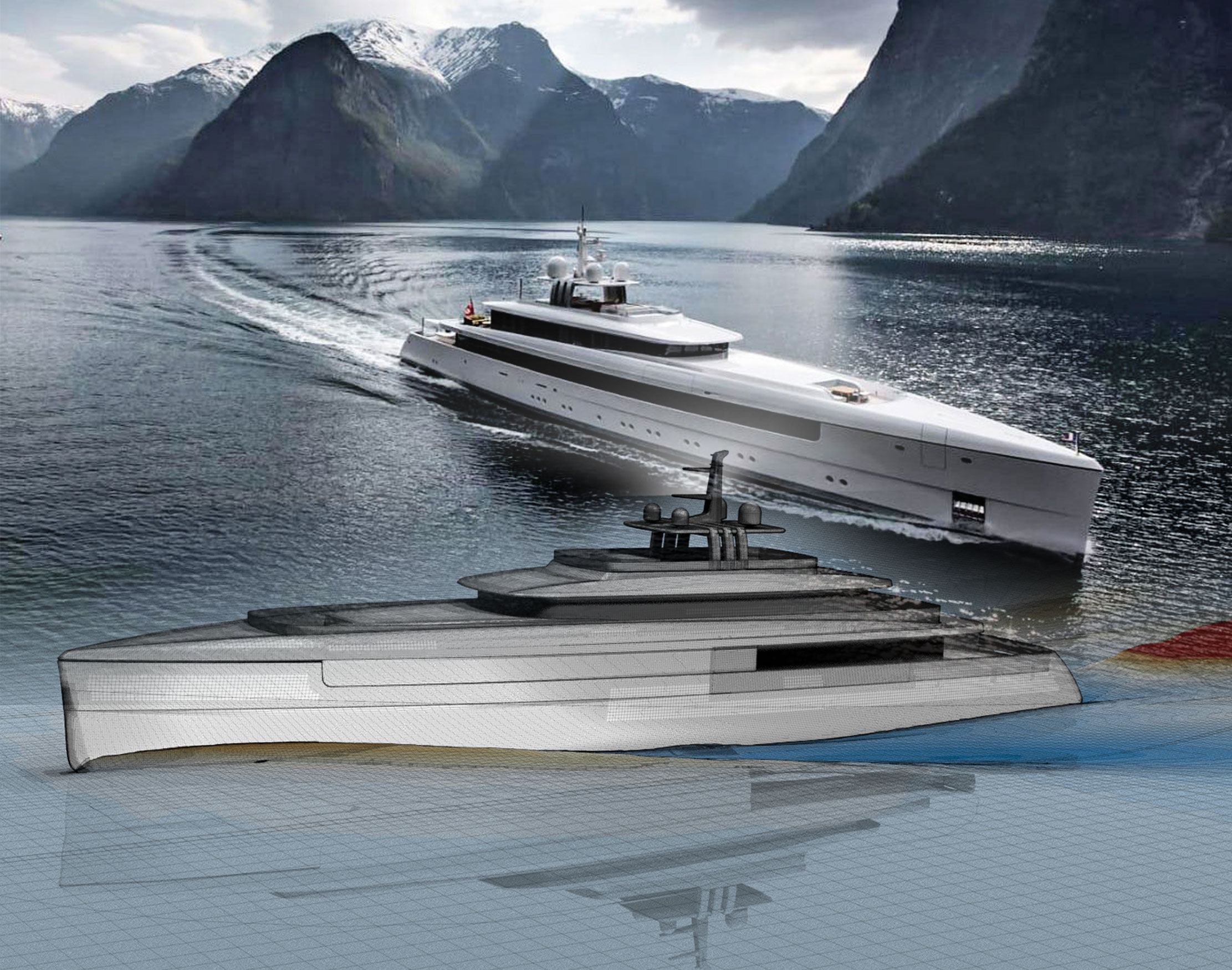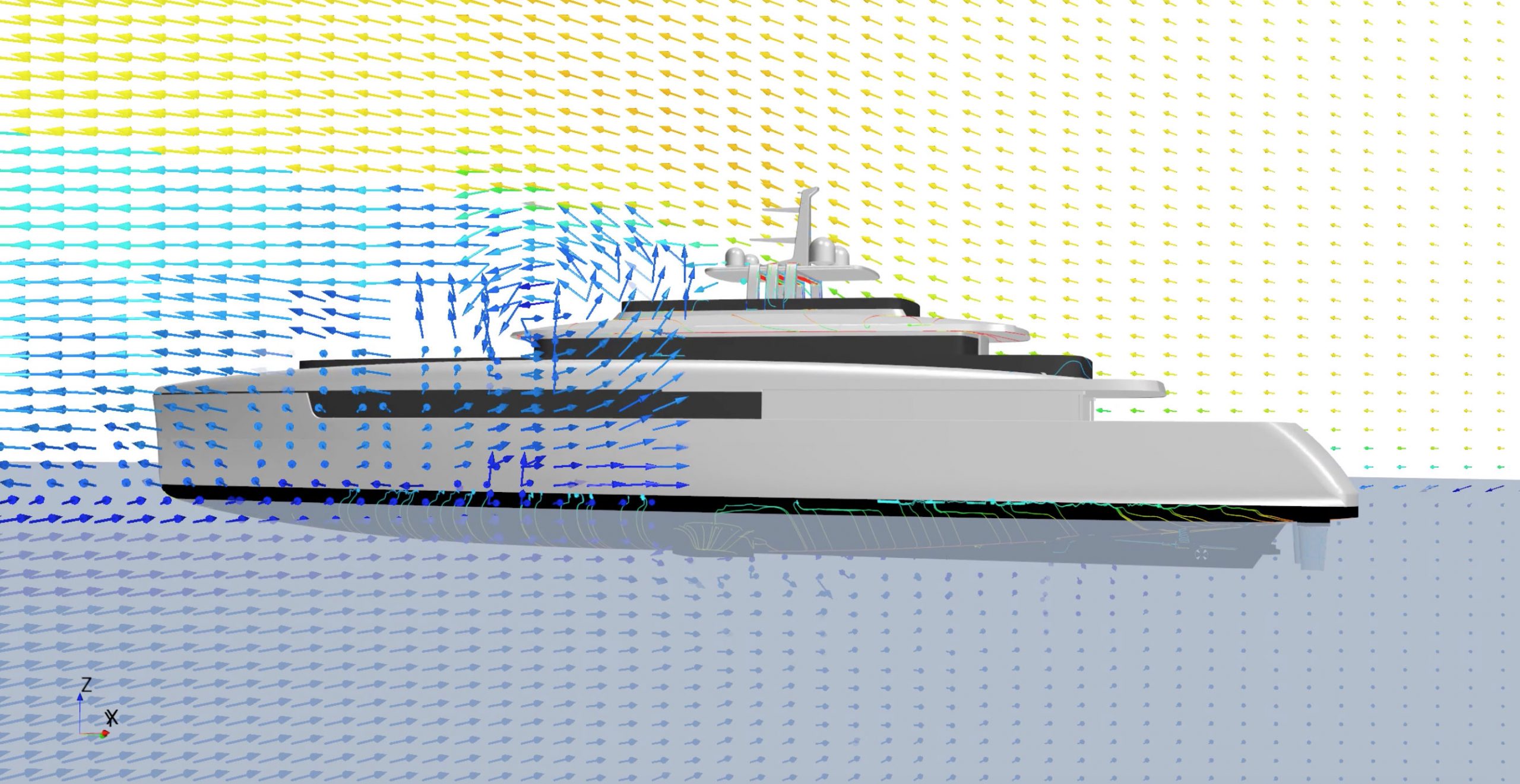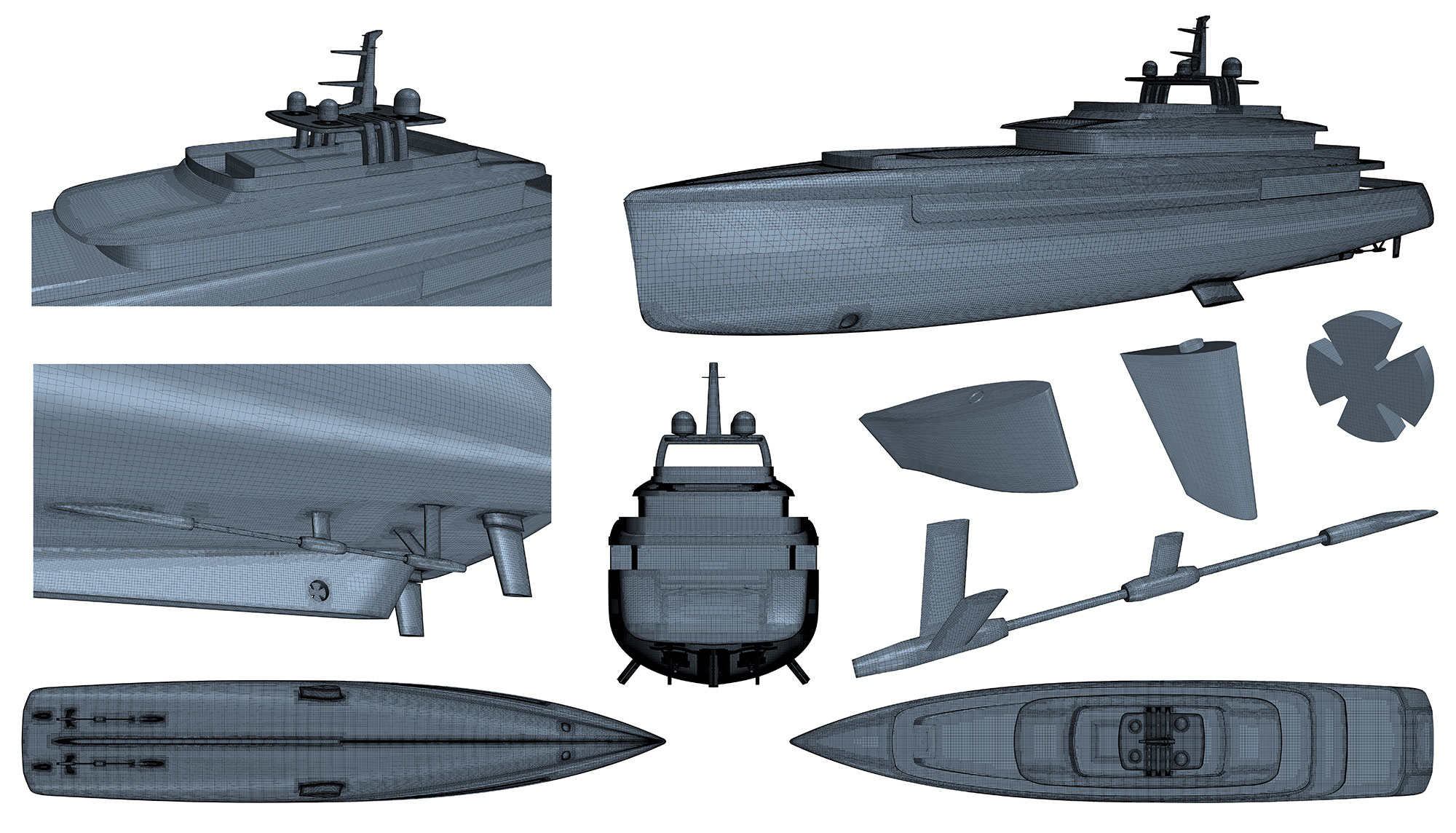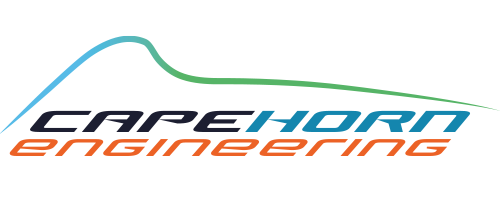We are delighted to continue our collaboration with Vitruvius Yachts, the London-based design and naval architecture company, led by Philippe Briand, for design studies of the signature superyacht brand.
We have proudly assisted the design team for several years with CFD analysis for both sailing and motor yachts. More recently, we performed some interesting CFD investigations on complex dynamic behaviour of their award winning superyacht Najiba on roll damping, the effect of wind on comfort on deck and propulsive efficiency.

Najiba – was the proud winner of the world Superyacht awards 2020 for Displacement Motor Yachts Between 500GT and 999GT.
Briand’s mission is to drive sustainability in the superyacht industry through collaboration and innovation and lead the way to neutralise its ecological footprint. One sustainable development goal is a focus on fuel consumption.
Built at the De Vries yard, Najiba’s performance data was phenomenal for a 58-metre yacht. Her top speed of 17 knots surpassed her rivals, while her fuel burn at her 12-knot economical cruise speed was just 137 litres/hour – around half that of her competitors despite her greater beam, clearly demonstrating an efficient hull design.
After her launch in January, Najiba’s sea trials the following month confirmed that her average fuel consumption could reach as low as 11.4 litres per nautical mile at a cruising speed of 12 knots, which is between 20 percent and 25 percent less than other motor yachts of her size. Her top speed of 17 knots and her range of over 6,000 nautical miles also exceeded expectations.
Study of propulsive efficiency analysis
Self-propulsion CFD simulation features rotating propellers at a constant RPM and delivers the attained vessel speed and shaft power. All appendages including roll stabiliser fins as well as the details of the superstructure to capture the windage are modelled.
Side wind and comfort on deck
Further CFD analysis were run of the influence of side wind on the hydrodynamic centre of lateral resistance of Najiba for a combined hydrodynamic/aerodynamic simulation. Comfort on deck was evaluated at the same time. Influence of size and position of underwater appendages on centre of lateral resistance and hydrodynamic behaviour under the effects of side wind were also considered. Several combinations of appendages and loading conditions were investigated.


Study of Roll Damping Coefficients
The prevention of roll motion onboard superyachts is of vital importance for passenger comfort and ship safety in a seaway. It can also be an important issue when the vessel is moored if resonance with low-frequency wave excitation takes place. Roll decay tests to determine the contributions to damping of several appendages were conducted at full scale by means of dynamic RANSE simulations.
The simulations start with the yacht in a position with 10 degrees of heel and no forward speed, from which it is instantaneously released. The yacht is then free to roll and the time history of the roll motion is recorded over several roll periods. The amplitude and period of the roll are assessed and roll damping coefficients calculated. Multiple cases were considered, with different configurations of appendages, such us skegs, pod drives, bilge keels and one pair of large stabiliser fins or two pairs of smaller fins. In the simulations all 6 degrees-of-freedom of the floating vessel are considered.
The complex dynamic simulations were performed at full scale following Cape Horn Engineering best practices and using the general-purpose commercial RANS code STAR-CCM+ from vendor Siemens PLM in its latest version. Mesh resolutions of more than 13 million cells were used, see image below showing details of the numerical mesh.


Starting with the bare hull, the appendages were added one by one to be able to quantify their individual contribution to roll damping.
The case including the skeg, pod drives, bilge keel and larger stabiliser fins provides the best performance relating to roll damping, with the most notable differences arising from the bilge keel and the fins which each provided a similar level of improvement. While the two smaller fins on each side provide the best individual roll damping, the case with the bilge keels and the larger fin on each side gives the best overall performance.
It is worth mentioning that while the simulation considers the surface roughness of the hull, this has several orders of magnitude less effect than the pressure forces acting on the yacht. Thus, the roll damping arises mostly from the vortex generation at sharp corners in the appendages and the pressure on the appendages as they move across the flow.
Roll decay tests to determine the contributions to damping of several appendages. The yacht configurations are at full scale with different appendages included. The simulations start with the yacht in a position with 10 degrees of heel and no forward speed, from which it is instantaneously released. The model is then free to roll and the time history of the roll motion is recorded over several roll periods. The amplitude and period of the roll are assessed and roll damping coefficients calculated.
For more details on Najiba, winner of the World Superyacht Awards 2020, please click the link. https://www.cape-horn-eng.com/najiba-winner-of-the-world-superyacht-awards-2020/

